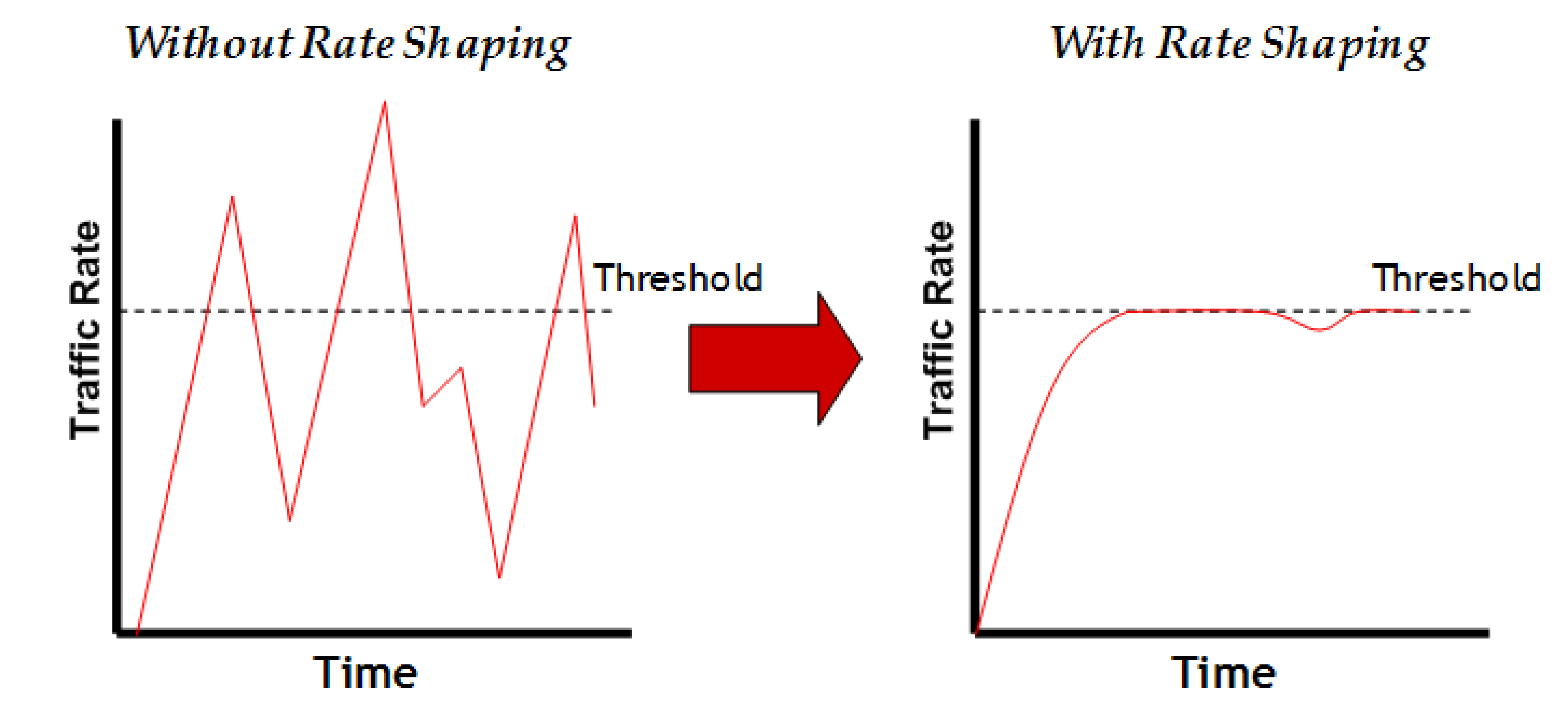Rate Shaping throttles the rate at which a port transmits (outbound) queued packets. Rate Shaping buffers packets received above the configured rate on a per CoS basis, rather than dropping them. Only when buffer capacity is exceeded are packets dropped. Rate shaping may be configured for a CoS on a port, for an 802.1p priority on a port, or for all Classes of Service on a port.
Rate Shaping Smoothing Behavior illustrates how bursty traffic is smoothed out when it bursts above the assigned threshold with rate shaping applied.

Rate shaping retains excess packets in a queue and then schedules these packets for later transmission over time. Therefore, the packet output rate is smoothed and bursts in transmission are not propagated as seen with rate limiting.
Rate shaping can be implemented for multiple reasons, such as controlling bandwidth, to offer differing levels of service, or to avoid traffic congestion on other links in the network by removing the burstiness property of traffic that can lead to discarded packets. Rate shaping is important for real-time traffic, where packet loss is extremely detrimental to these applications. Instead of discarding traffic imposed by rate limiting, delays are induced into its transmission by retaining the data for future transmission. However, the delays must also be bounded to the degree that the traffic is sensitive to delays.

 Print
this page
Print
this page Email this topic
Email this topic Feedback
Feedback